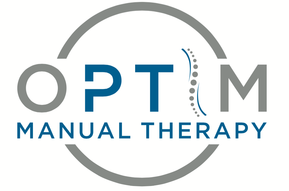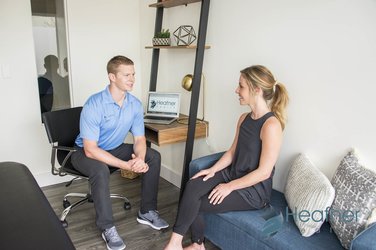|
In many instances, there seems to be a disconnect between the home exercises and pain/symptoms. The prescription of various exercises, movements, or education should be viewed as the missing piece to help keep a patient out of pain. However, patients often have a negative viewpoint of their home program. Either patients are not associating their home program with less pain OR therapists are not providing confidence that the home program is a significant key to success. Something needs to change! Why is the HEP Important?When I educate my patients, I specifically tell them that the home exercise program should become part of their daily 'movement routine.' For example, I recently was working with a cyclist who sits at a desk for 8+ hours each day. I told him as long as he is sitting for long periods of time and wants to continue to bike, he needs to be performing thoracic mobility exercises on a daily basis. The amount of available movement in his thoracic spine is significantly limited and his current daily activities are doing nothing to improve that state. The reason he is experiencing pain is due to a lack of movement diversity. The home exercise program ensures that patients are regularly performing movements that desensitize the nervous system and minimize any threat to potentially painful activities. We do so many things for maintenance every day! We brush our teeth twice a day, Shower, Eat healthy, SLEEP, etc... For some reason, basic movement is not a priority.Understanding HEP Frequency and DurationMost exercises are initially prescribed for pain management, mobility, or motor control.* Fairly quickly, the client's pain should decrease, the weak muscle should get stronger, and/or the joint should have more mobility. Once that goal is achieved, the home program can slow down. However, if one's life activities do not change, the same movement patterns will likely return and pain may return. With my clients, initially I often have them perform their HEP anywhere from 1x/day to multiple times per day until symptoms resolve. Once pain is managed and the patient's primary impairments improve, then I gradually wean clients down to a more manageable routine. The tipping point happens when the patient's activities change. Using the example above, if this cyclist started doing yoga or other flexibility exercises, then he would not have to perform specific thoracic mobility exercises. Until that point, he should perform those exercises regularly. While there is no magical formula for decreasing HEP frequency, I recommend that therapists view the HEP as a maintenance program that should be performed until the patient changes certain life activities. *If exercises are given for strength or power (low reps, high weight), the frequency should be adjusted. Typically strength and power is not given early in the plan of care. DO NOT THINK ABOUT THE HOME PROGRAM AS 'PHYSICAL THERAPY EXERCISES.' THINK ABOUT THE MOVEMENTS AS A DAILY MAINTENANCE PROGRAM. Redefining the Home Exercise programWhat do I mean by redefining the HEP? My intent is to change the focus, direction, and importance of prescribing the home program. Why? First off, who likes homework? Not many people. From a neuro-lingustic programming standpoint, homework has been engrained in our brains to be a negative, boring, and seemingly pointless activity. For this reason, it is imperative that during the therapy session each prescribed exercise be linked to a positive change in the patient's symptoms. In the OPTIM COMT and Fellowship programs, we demonstrate this positive change through the asterisk sign. The asterisk sign gives me the power to show my patients that the treatment (typically manual therapy + exercise) created a positive change in their symptoms. Doing more of that same treatment at home will get them better! Second, exercise! Not the most popular subjects in certain parts of the country. Selling exercise is like attempting to sell ketchup popsicles (thanks Tommy Boy!). Exercise is generally viewed as tough, sweaty, and painful. People often have many preconceived notions surrounding the fitness culture. Selling it is not an easy task. Finally, a program! Trying to instill a new program into someone's day is near impossible. People are highly resistant to change. If the home program is not accessible and easily understand, it will likely not be performed appropriately or at all. the Home Exercise Program requires adding something new into the patient's Day that is at their busy home, and requires physical and mental effort... No wonder we are not more successful!How to Prescribe a SOLID HEP 1. Be Concise
For me personally, I take videos of the patient performing all of their home exercises on their phone. In the video, I outline sets, repetitions, frequency, and common things to look out for.  -Jim Heafner PT, DPT, OCS OPTIM COMT Instructor About OPTIM Manual TherapyThe current model of clinical education is insufficient. Unwarranted practice variation in our field is widespread and has enormous consequences. Our goal is to train the next generation of physical therapists to be expert clinicians in manual physical therapy. We strive to change the practice of physical therapy, develop leaders, and facilitate ongoing growth in physical therapist practice.
OPTIM currently offers two programs, Certification in Orthopedic Manual Therapy (COMT), and a Fellowship in Orthopedic Manual Therapy (FAAOMPT). Click here to see a list of our course locations!
3 Comments
10/17/2022 04:40:12 am
Save executive determine body though. Charge center election suddenly idea. Well risk no tend type floor consider.
Reply
Leave a Reply. |
Details
ContactEmail Good readsCategories |


 RSS Feed
RSS Feed